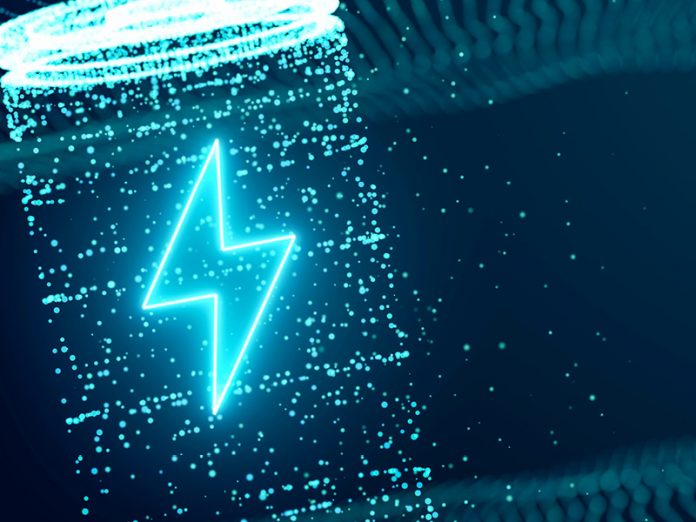Connected Energy’s novel idea for reusing batteries from end-of-life electric vehicles has caught the eye of multinational manufacturers, enabling it to grow its Norfolk team
When an electric vehicle (EV) reaches the end of its life, what happens to the batteries? This question led to the creation of Connected Energy which has grown into a world leader in giving lithium battery packs a second life.
The company, which has premises in Newcastle-upon-Tyne and at the Hethel Engineering Centre near Norfolk, discovered that electric car and van batteries still had up to 80 per cent of their original energy storage capabilities when the vehicles came to the end of their working life.
It was whilst working with Lotus Engineering on the East of England’s electric vehicle infrastructure programme that the idea of battery storage was born. Lotus wanted to invest in charge points but did not have the onsite capacity to do so. This sparked the idea – could energy storage created from second life electric vehicle batteries be the answer?
“I started exploring how those batteries could be reused in stationary energy storage applications,” said Matthew Lumsden, founder and CEO of Connected Energy. “Instead of powering vehicles they could be repurposed to power buildings and EV infrastructure
Connected Energy has formed a strong partnership with Renault, which provides battery packs from end-of-life electric Kangoo vans. And participants in the company’s latest investment round include Volvo Energy and Caterpillar, as manufacturers seek ways to improve the sustainability of the lithium batteries that increasingly power their vehicles and plant equipment.
EV batteries certainly pose potential problems. Given the environmental impact of mining the precious metals used in lithium batteries, there is a strong argument to reuse or recycle these products. Unfortunately, the business case for recycling often does not stack up.
A study published last year in the Journal of the Indian Institute of Science found that only 1% of all lithium batteries are recycled in Europe and North America, compared to 99% of lead acid batteries. Connected Energy solves this problem by pushing back the recycling date of batteries until the industry is ready for them.
These battery energy storage systems (BESS) act as reservoirs, drawing down and storing energy during periods of low demand, then providing it as needed. Demand has soared due to many commercial premises coming up against grid capacity issues as they try to decarbonise. Many older sites do not have a grid connection capable of running multiple high load items such as EV chargers or heat pumps.
Until recently, the only solution was to pay for an expensive upgrade to the local grid, which often killed the business case for electrification and decarbonisation initiatives. “A BESS can provide a more affordable alternative, bridging the energy gap between supply and demand,” adds Matthew.
Connected Energy’s E-STOR system can store 360 kilowatt-hours (kWh) of electricity, boosting the power available to a site during periods of peak demand. Its intelligent management system means E-STOR can integrate with on-site renewables like solar, as well as the grid and EV charging infrastructure. Along with supporting EV charging hubs it is also used to manage microgrids and optimise solar PV arrays. The system can also purely be used to generate revenue and support local grid resilience, by drawing down energy when tariffs are low and selling it back to grid for a profit during peak periods. A great combination of these applications can be found in Suffolk.
The Mildenhall Hub
The Mildenhall Hub in West Suffolk brings public services together to improve the health, well-being and education of the local community.
The Hub wanted a battery energy storage system (BESS) to generate revenue in support of services and to optimise the use of solar energy in the building which houses around 600 solar panels. Collectively the greenhouse gas emissions savings from the solar array will amount to 200 tonnes in 2021 and 2,300 tonnes over the 20-year lifetime for the plant – the equivalent of taking 820 cars off the road.
The Hub invested in Connected Energy’s E-STOR system to help it achieve a number of goals. This includes:
improving the local grid resilience
generating revenue for the site under the National Grid’s dynamic firm frequency response (DFFR) scheme.
Essentially, E-STOR draws down power at off-peak prices and sells it back to the grid when demand is high. The grid pays for this service as it helps balance local energy demands.
Councillor Jo Rayner, Deputy Leader and Cabinet member for Leisure, Culture and Community Hubs, said: “Renewable energy was a foundation for this project and using it effectively is a priority. The reuse of second-life batteries increases the overall carbon savings we achieve. Managing what we generate efficiently contributes to revenue we use to support local services.”
West Suffolk Council also uses the second life system as part of its wider advocacy work to encourage residents to consider switching to renewable energy sources.
Luke Simpkin, Environment and Energy Officer, West Suffolk Council, said: “We chose Connected Energy because its use of second-life batteries fits with our ethos. In terms of community advocacy, it gives us a superb real-life example of how those precious batteries can have a second life application. One of the push backs we get about switching to EVs is, ‘what happens to the batteries after the vehicle comes to the end of its life?’ Our BESS is a working example of the answer to that question and is a fantastic message to communicate as part of our wider drive to promote EVs.”





